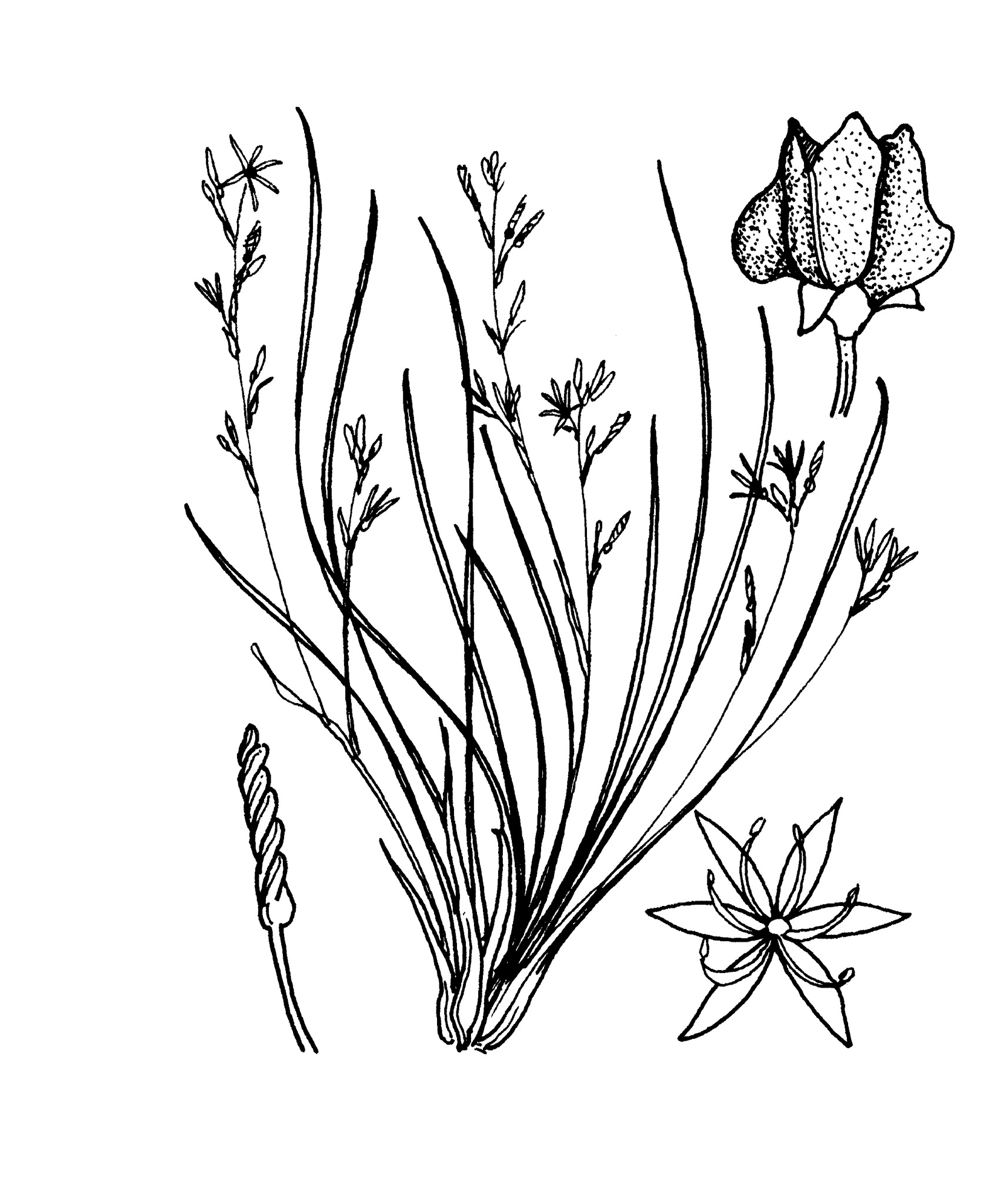
Named for F. Caesi (1585–1630), an Italian naturalist.
Perennial, tufted rhizomatous herb with tuberous or thickened roots. Leaves several in a basal rosette, linear, sheathing. Flowers lasting only one day, spreading, radially symmetrical, twisting after flowering, stalked, individual flower stalks articulated. Inflorescence a terminal panicle.Tepals 3+3, free. Stamens 3+3, free, papillose. Ovary superior. Fruit a capsule. Seeds ovoid, black, with arils.
Named for F. Caesi (1585-1630), an Italian naturalist.
About 11 species from Australia, New Guinea and Africa, 8 very variable species native, 7 endemic. 1 species sometimes cultivated in southern Australia.
Tepals twisting after flowering; papillate stamens of two different lengths; arillate seeds.
Source: (2005). Hemerocallidaceae. In: . Horticultural Flora of South-eastern Australia. Volume 5. Flowering plants. Monocotyledons. The identification of garden and cultivated plants. University of New South Wales Press.
